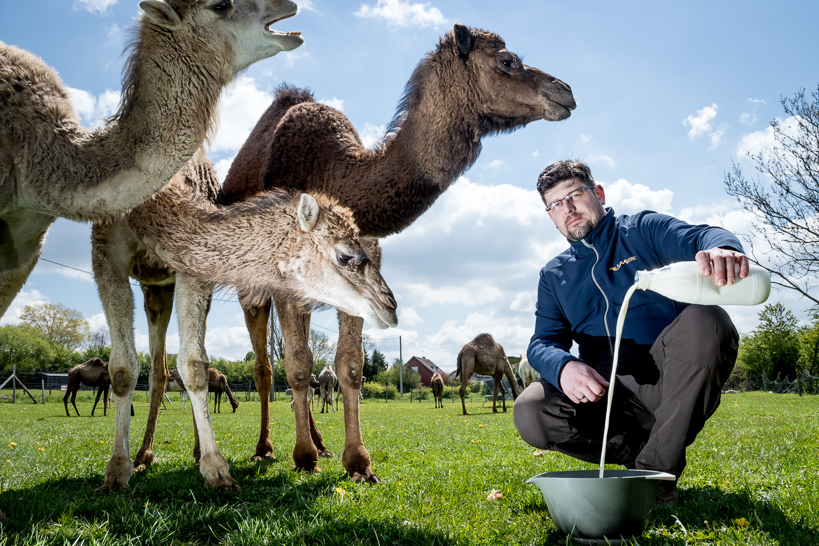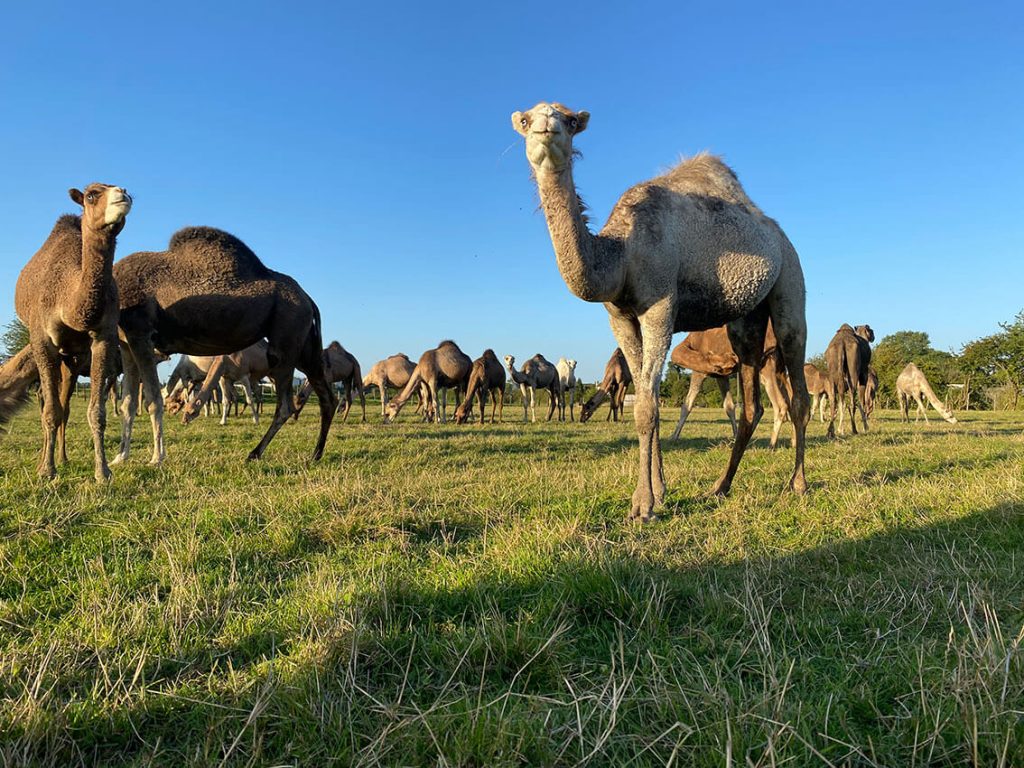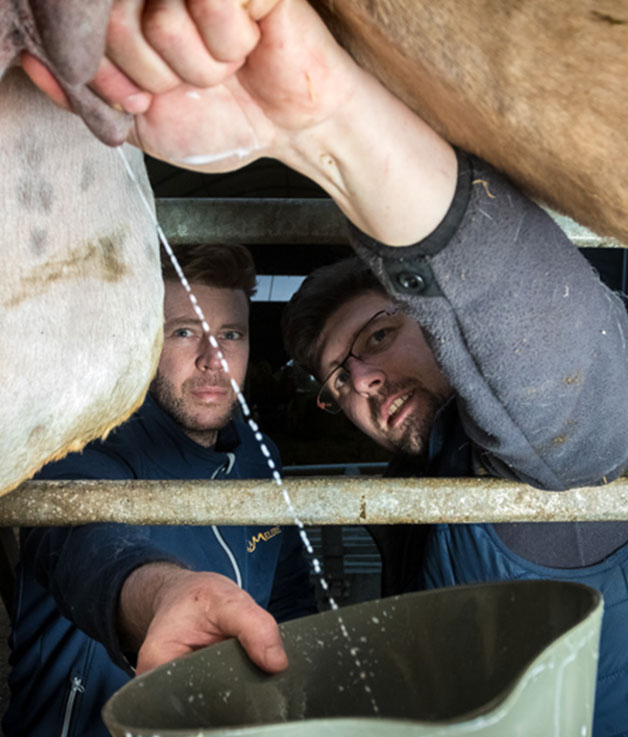But by the way ... who areour strange animals in ourfamous sambre-avesnois bocage?
Dromedary

The dromedary’s range (excluding circuses, animal parks and Australia) includes a whole series of desert and semi-arid countries from Mauritania in the west, Indian Rajasthan in the east, Turkmenistan in the north and Kenya in the south. These four countries represent the cardinal points of the dromedary species on the African and Asian continents.
And yet, the European dromedary does exist. The Canary Islands, off the coast of Morocco, are volcanic islands belonging to Spain, and as such are part of the European Union. Since the 15th century, some 2,000 dromedaries have lived here, originating in the nearby Western Sahara. More precisely, the first camels arrived in the Canaries in 1405 via a French landowner from Normandy. Selected in situ since that time, Canary dromedaries have evolved into a specific local breed called Majorero, although more recent imports and frequent interbreeding have made local genetics somewhat more complex. The purest specimens are found on the desert island of Fuerteventura.
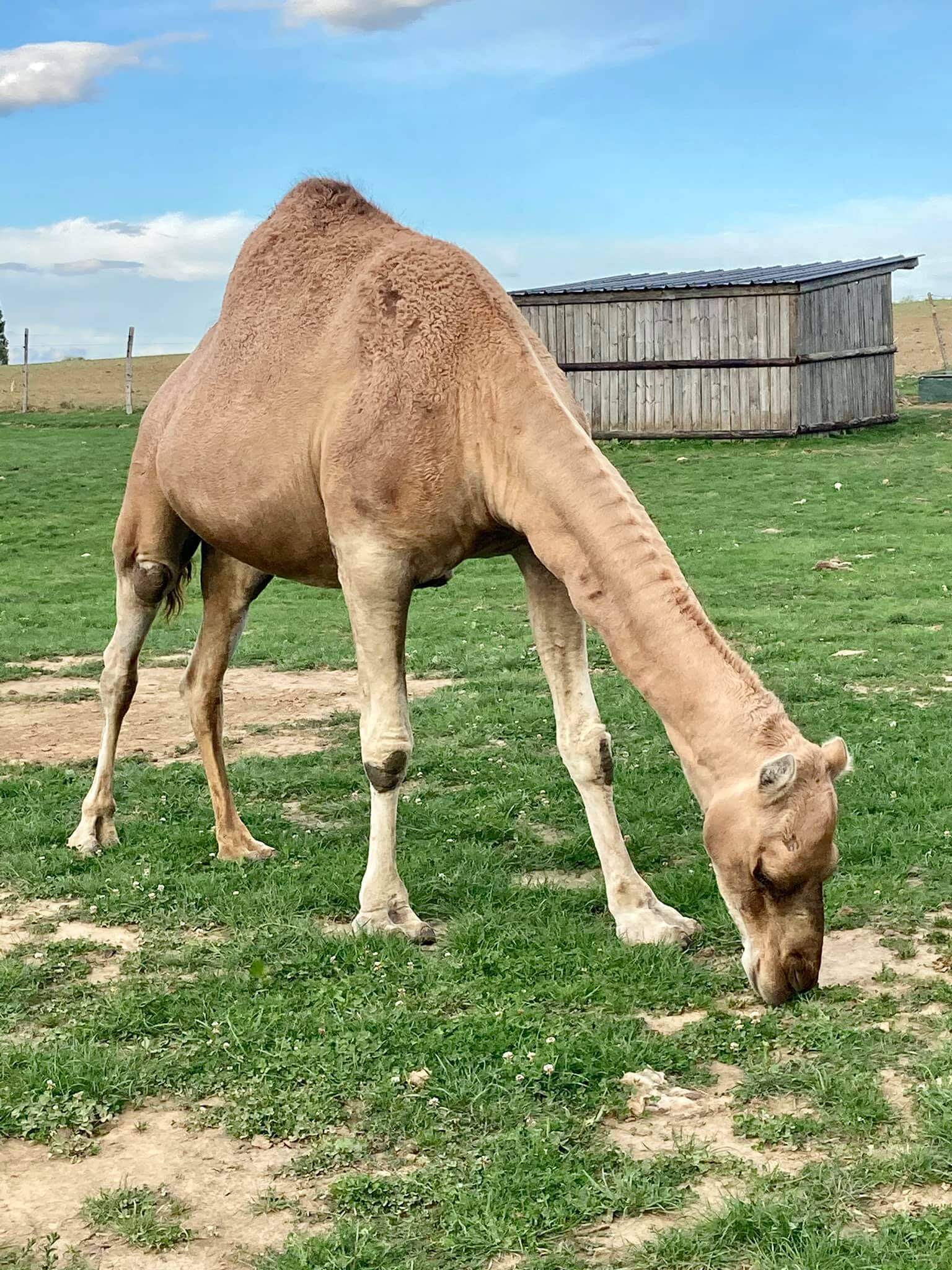
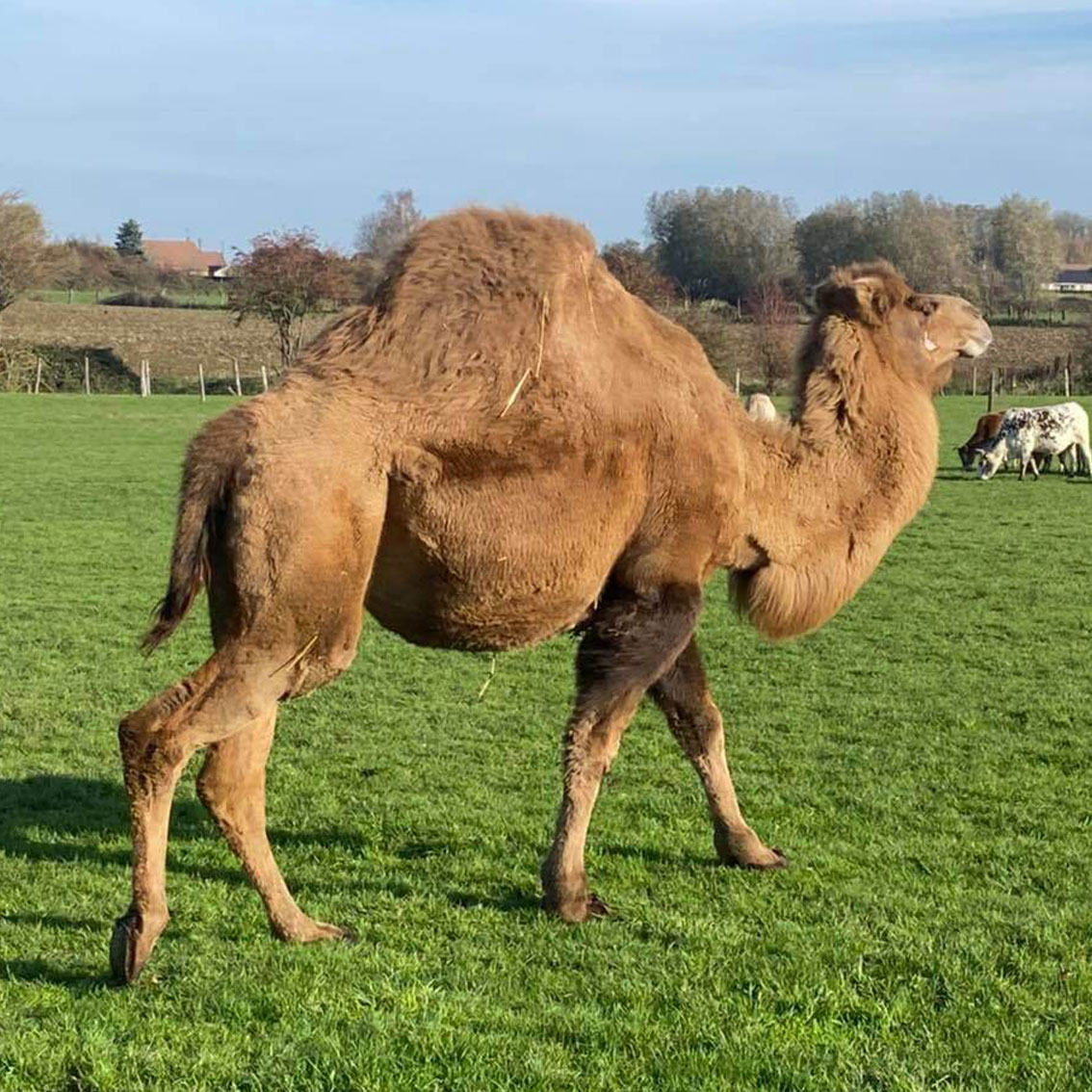
It’s a robust animal, intended for saddled riding, but its use for food (milk and meat) has not been developed at all. The desert environment of the seven islands that make up the Canary archipelago is rather favorable to the species, and if in the past the dromedary was an auxiliary of migrant Spanish farmers (the indigenous Guanche population having been decimated), today it is no more than an advertising argument for local tourism.
Camel

Mongolia has a continental, semi-arid climate. The Gobi Desert lies on the border with China. These arid depressions, known as the Gobi, are sparsely populated and can only be developed through hyper-extensive livestock farming, dominated by the Bactrian camel and small ruminants. These areas were severely affected by the dzud (abnormally harsh winter with heavy snowfall) of the early 2000s, which led to a sharp drop in the animal population (between 20% and 75% depending on the area), causing a rural exodus in areas already severely handicapped by low human density.
Like all other species, Bactrian camel numbers fell sharply during these climatic events, even though the camel was relatively more resilient. Between 1999 and 2002, the number of camel heads fell from 322,000 to 253,000. The recovery of these numbers has been slow, partly due to the species’ slow reproductive cycle, and partly due to the fact that, to compensate for the considerable losses in other species (particularly cattle and horses), breeders are overexploiting camels (selling them for meat), the only means of generating cash.
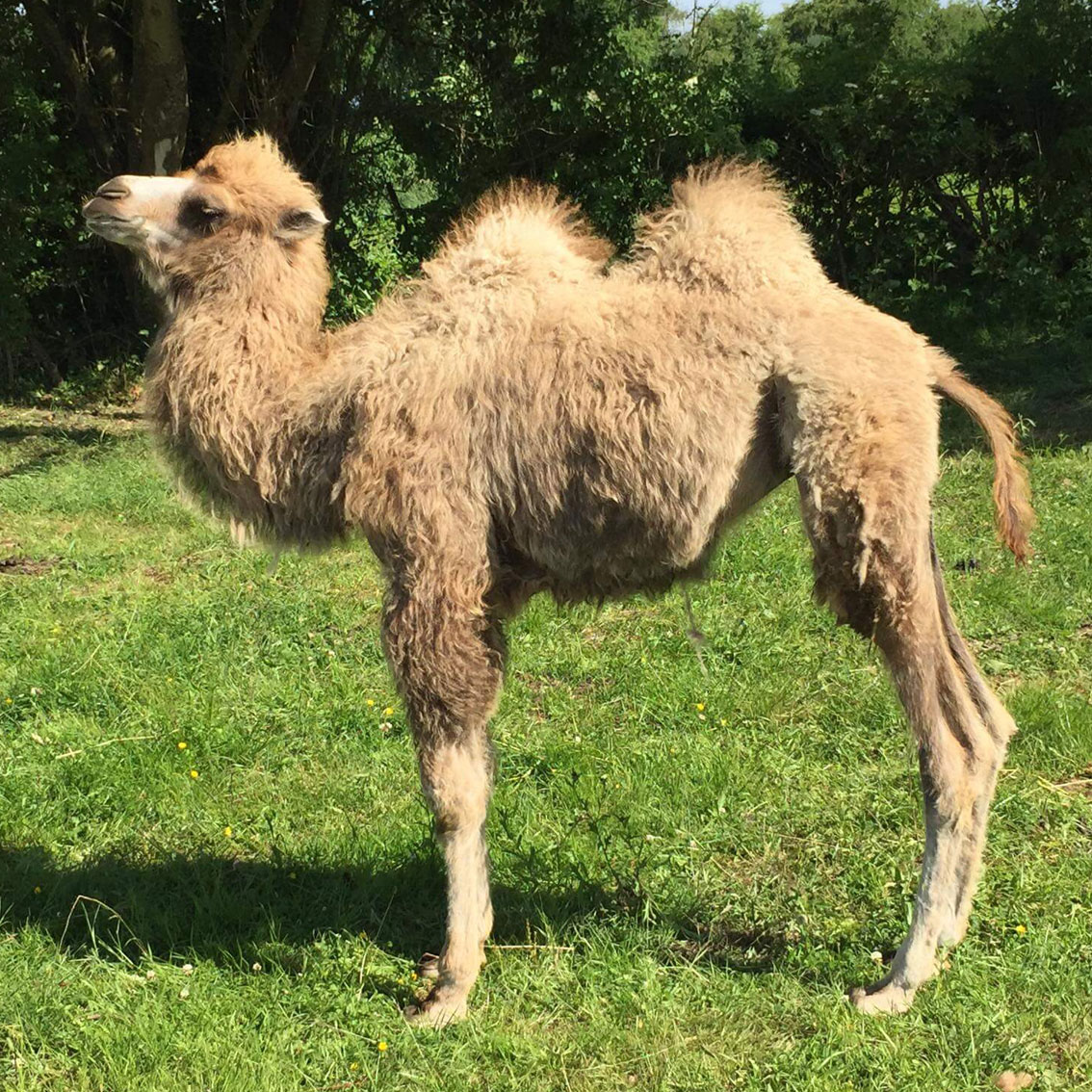
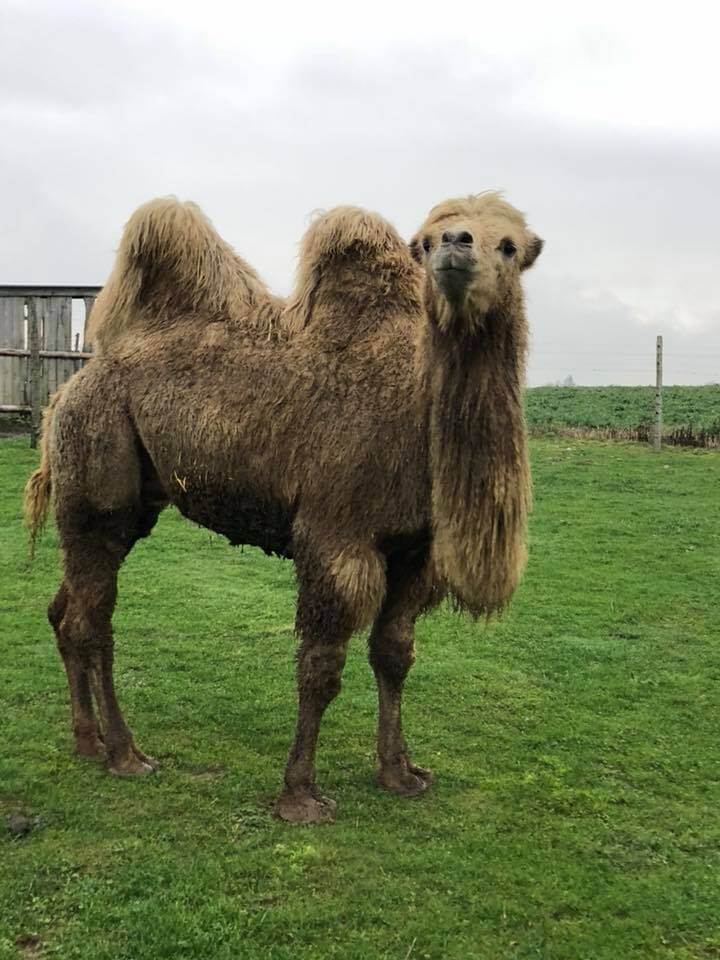
The Alashan Desert is located in northern China, in what is known as Inner Mongolia. It’s an ecosystem perfectly suited to a breed of two-humped Bactrian camel, the Alashan (in Mongolian) or Alxa (in Chinese) camel. It’s a rather small animal, especially renowned for the quality of its wool. The Alashan camel population fell from 62,800 head in 1980 to just 24,000 in 2009, but since then numbers have been rising again. The current figure is 38,200. This renewed interest in the Alashan camel is partly linked to the development of the quality wool industry for the domestic and export markets, as well as for milk and meat production. It is also used for racing at the Alashan festival. The Camel Research Institute in Alashan has been working on adding value to camel milk and meat products, with some success. Various products such as yoghurts, fermented and pasteurized milks, camel milk-based cosmetics and camel meat pâtés are now available on the local market, in addition to camel wool scarves and clothing.
Origins
The first camelid, the Protolabis, appeared in North America during the Miocene period, which began 23 million years ago. Protolabis is a descendant of the Paebrotherium, which was not yet a camelid. It was succeeded by the Procamelus, whose size began to evolve from that of a sheep to that of a deer or even a camel. At the same time, the llama genus Pliauchenia and then Auchenia appeared, migrating to southern America along the Andes to form the laminis subfamily. Aepycamelus appeared in the Miocene, a long-necked animal resembling our current giraffes, but which rapidly disappeared, probably due to climate change, without leaving any descendants.

Camelids begin to migrate northwest, where we find Titanotylopus, once the largest camelid. It’s at this point that the camel’s specific foot appears, with enlarged toes and a plantar pad made of adipose tissue, with only the front of the hoof touching the ground. It was devoid of the famous hump. In fact, this lump of fat is the solution camelids have found to survive in a hostile environment. Migration continued westwards, to the Asian continent, which was linked to America at this time. This is when the Camelops suddenly appears, colonizing the grassy steppes from Mongolia to India, and then gradually moving westwards across this latitude.
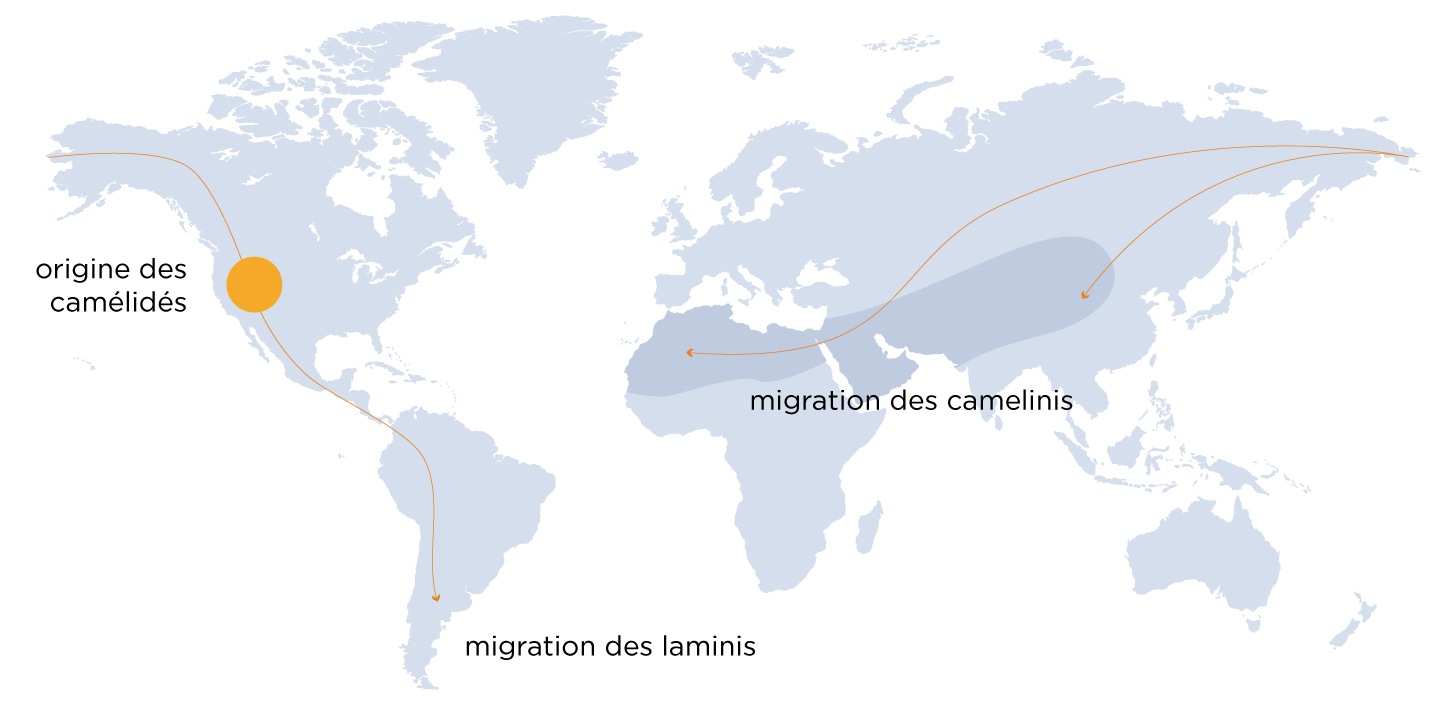
But by the way ... who areour strange animals in ourfamous sambre-avesnois bocage?
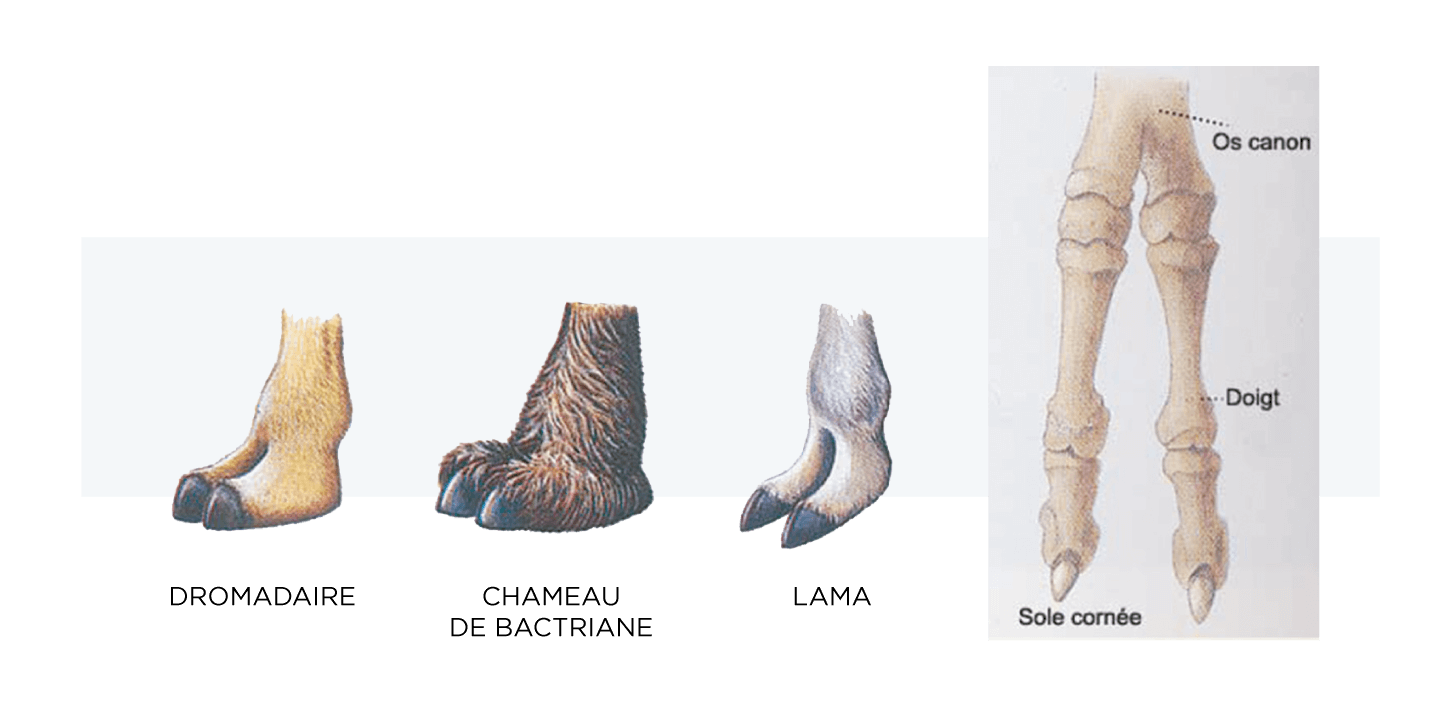
Camelus is the last species considered to be the closest to today’s species. The dromedary is thought to have entered Africa via the Sinai to the Horn of Africa, then North Africa to the Atlantic, some 2 or 3 million years ago. However, according to current data, it disappeared from the African continent, only to be reintroduced much later, thanks to domestication.

– Camelus dromediarus (dromedary or 1-humped camel)
– Camelus bactrianus (Bactrian camel or domestic camel)
– Camelus bactrianus ferus (wild Tartarian camel), which is sometimes recognized as a different species from the domestic Bactrian species and is thought to be Camelus ferus.
– Lama glama (lama)
– Lama glama guanicoe (guanaco), sometimes treated as a species in its own right
– Vicugna vicugna (vicuña)
– Vicugna pacos (alpaca)
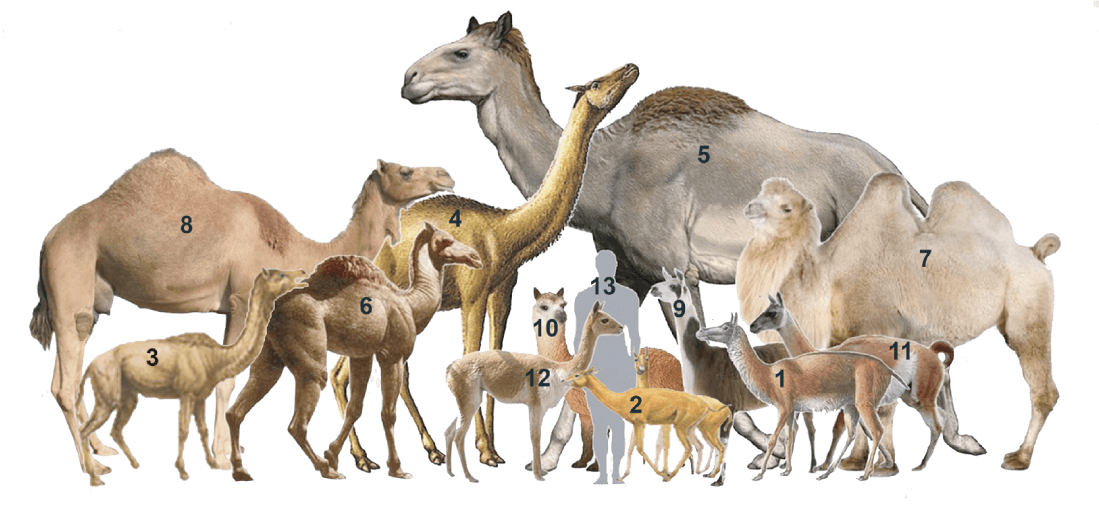
6. Camelops 7. Camel – 8. camel – 9. Lama – 10. Alpaca – 11. Guanaco
12. Vigogne – 13. Male
Domestication
8,000 years BC. The first use of the dromedary was as a pack animal, and is undoubtedly associated with the spice trade, which flourished at this time between the south of the Arabian Peninsula and the Mediterranean. Then, at the beginning of the Christian era, the dromedary entered North Africa via Sinai. This caravan trade led to the birth of some glorious civilizations.

Illustration showing the arrival of the Magi in Bethlehem, bringing gold, myrrh and frankincense.
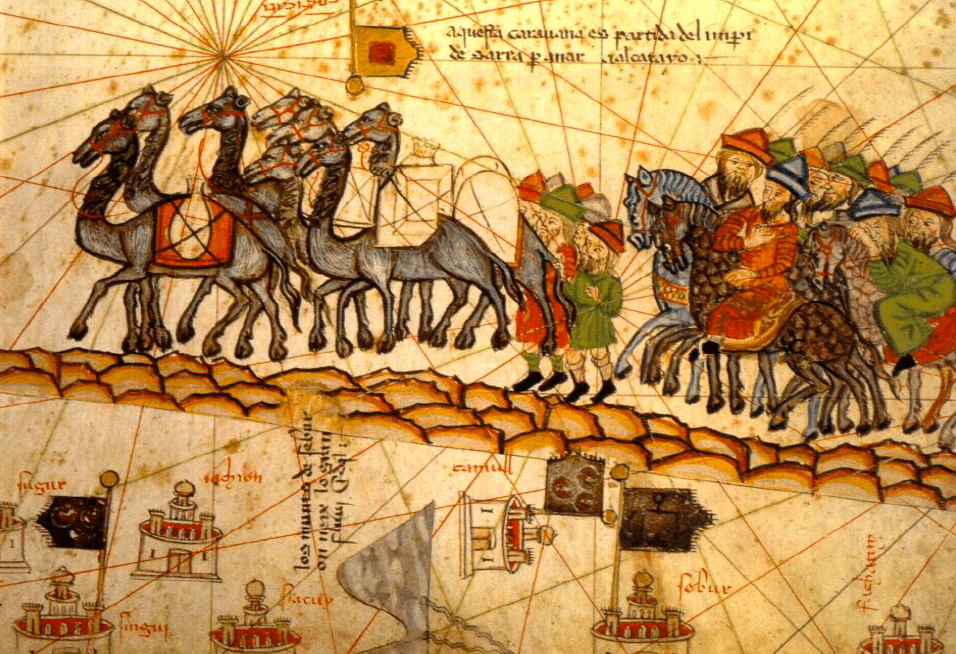
Presentation of the Silk Road,
Catalan Atlas 1735
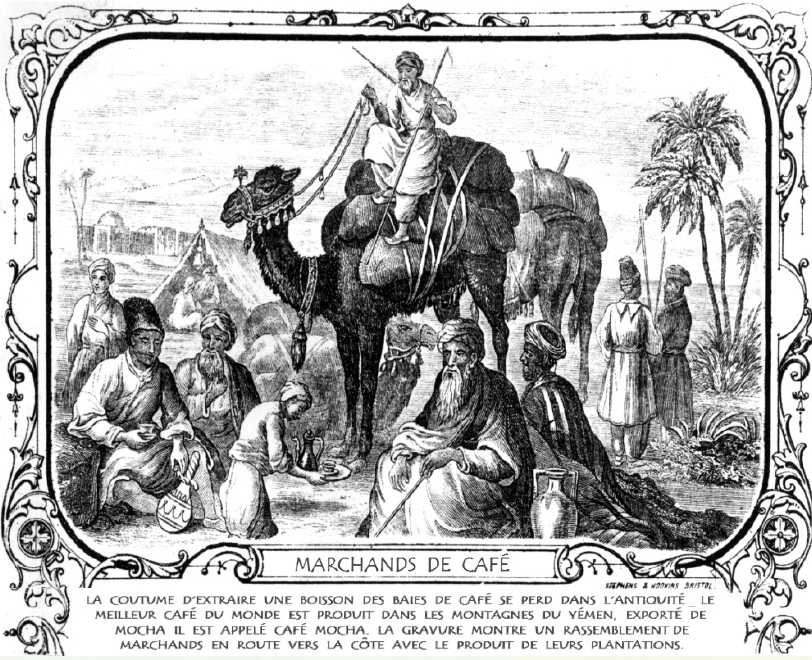
Engraving showing Yemeni coffee merchants
on the way to Mocha. 1850
The camel was first domesticated in the first millennium BC. One of the earliest illustrations of camel domestication is a bas-relief on the Black Obelisk of the Assyrian king Salmanazar III (9th century BC), which depicts the animal being led by the bridle by a man. The Bactrian camel was the main means of locomotion along the Silk Road.

Black obelisk, discovered in 1846 at Kalhu, ancient capital of Assyria (British museum)

Merchants on the Silk Road
Unlike the dromedary, the camel has long remained virtually unknown in Western Europe. Camels used for work are prized for their endurance and adaptation to extreme conditions. On long journeys, he can cover 30 to 40 km a day carrying a pack weighing 250 to 300 kg, i.e. almost half his own weight. As a mount, the camel can cover more than 100 km a day at a speed of 10 to 12 km/h. A pack-laden Bactrian camel walks at a speed of around 5 km/h, significantly slower than the average equine, but with an endurance and frugality far exceeding that of any horse or donkey.
In times of war, the camel was used in Persia loaded with cannon and ammunition.
Russian armies of the 18th and 19th centuries included a few cavalry units of this type, notably from the Kalmyk contingent. They used it extensively on their expeditions to Central Asia. Famous attempts have been made to use the camel by the army in places where it had never set foot. In 1855, groups of camelids (Bactrian camels and dromedaries) were brought to the United States to be used as pack animals during the Indian wars.
Camels were actively used as pack and draft animals by the Soviet and Mongol armies during the Battle of Khalkhin Gol (1939) and the Great Patriotic War (1941 to 1945).
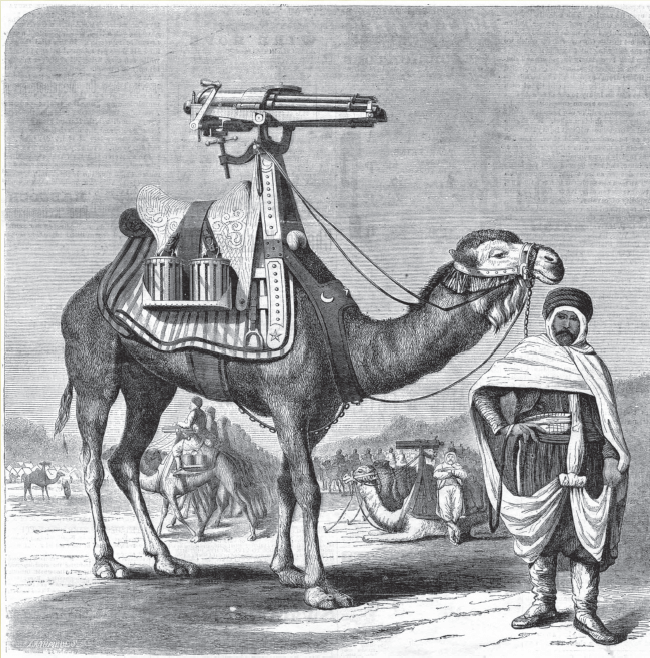
Drawing of a camel showing a gatling 1872
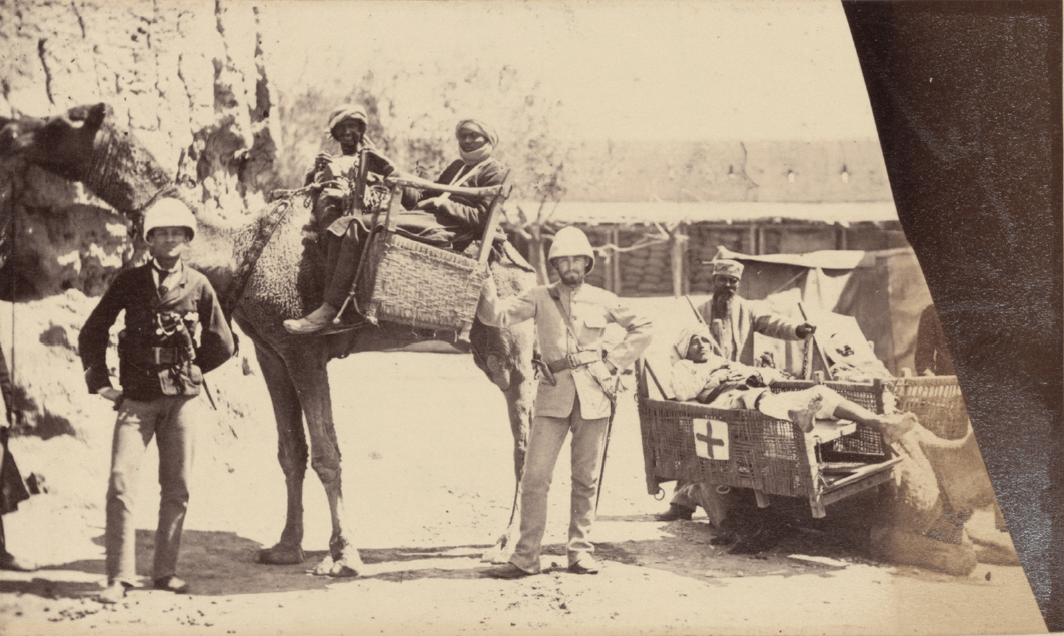
Dromedary carrying wounded in Afghanistan 1878
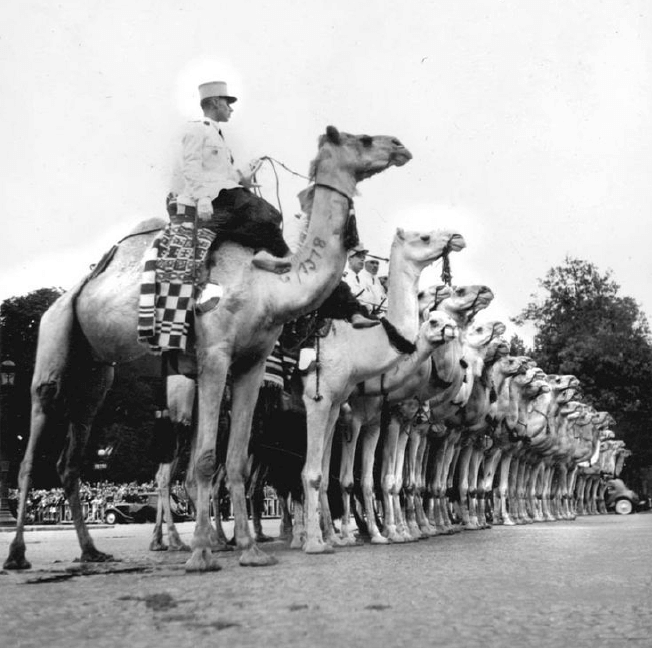
Compagnie méhariste Saharienne

Monument in Akhtubinsk representing the camels that pulled one of the first cannons to open fire on the Reich Chancellery.

Alice Springs station in the heart of Australia, showing “The Ghan” train from Adelaide in the south to Darwin in the north.
Saharan meharist companies were French army units designed to control the Saharan territories during the French Algerian era. In particular, they played a major role in the conquest of southern Algeria, and subsequently ensured the French presence in the Sahara.
Around 1840, the British brought the dromedary to Australia as a pack animal for inland exploration and railway construction.
In the 1920s, wagons and trucks replaced them, and the animals were released back into the wild. With no natural predators, they were able to reproduce in peace. Their population has returned to the wild (marronage phenomenon) and is increasing exponentially (doubling in 8 to 12 years) to probably over a million head at present. It now poses a threat to flora and fauna and is considered a pest.

